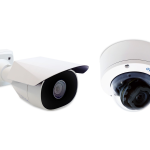Managing videos can be challenging due to their unique characteristics. Unlike other file types, videos are dynamic, larger in size, and often need seamless streaming. Dealing with various formats, resolutions, and bitrates adds to the complexity.
Additionally, the multitude of devices and screen sizes further complicates video management. To navigate these challenges, a reliable video content management system is essential. This system helps handle the intricacies associated with video assets.
Let’s explore what a video content management system is, what it is, why it is important, and the benefits it offers. One can effectively streamline video content management by understanding these aspects.
What is a Video CMS?
A video content management system, also known as video hosting CMS or video CMS, is a particular type of system used to manage videos. Instead of handling different kinds of media, it’s designed specifically for hosting and streaming video files.
With a video CMS, you can effortlessly search and sort through your videos using keywords and other data points to find what you need quickly.
Think of it like a library for your videos. You can use its essential search function to find specific videos, embed them on websites, group them, or perform bulk actions. Some video CMS even lets you customize your system using a feature called video API.
Having all your videos in one place makes storing and organizing them simpler. This makes it easier to share them on live or on-demand channels.
Why Video CMS is Important for Your Business?
Video content rules the internet, making up 80% of online traffic. Companies use videos to connect with their audience, but managing these assets efficiently is crucial. Video CMS comes to the rescue by offering a centralized hub for storing, categorizing, and accessing videos.
This enhances the searchability of the digital library, ensuring easy distribution to viewers. Moreover, a video CMS guarantees seamless streaming and robust security measures. It ensures a disruption-free and secure experience for creators and viewers.
Business Benefits of Video CMS
Let’s examine the main benefits of a video CMS more closely.
1. Centralized storage for video assets
The best CMS for video content is really helpful because it makes it easy to store big video files efficiently. Unlike small JPEG images, videos can be much larger, even when compressed. Regular content management systems need help handling these big video files, which is not suitable for organizations wanting to share long training videos or have live meetings.
Video CMSs are great because they can store all your videos in one place and make it easy to upload more as your needs grow. Plus, they make it simple to find videos using details like keywords and titles, making it easier for users and content distributors to search through their digital libraries.
2. Provide high-end security
Why not just put all your videos on YouTube? YouTube is great for sharing videos with everyone, but sometimes you need to keep things private. That’s where video CMSs come in handy. These systems are perfect for training videos or meetings you want certain people to see.
Video CMSs can also help you control who sees your videos. For example, if you only want paying customers to access certain content, putting it on YouTube wouldn’t work. A good video CMS ensures that only authorized viewers can watch your private videos. It encrypts the connection between the viewer’s browser and your hosting server. This helps to keep your videos safe from prying eyes.
3. User-Friendly Access
Using software that’s difficult to navigate is a common frustration. We’ve all been there, struggling with new installations or new gadgets. If an application is too complicated, people often avoid using it altogether.
Complicated software wastes time and makes it challenging to understand how things work. That’s why businesses prefer user-friendly software that doesn’t require extensive technical knowledge. Content Management Systems are designed with this in mind, offering a significant advantage in ease of use. Many popular CMS options in the market are known for their user-friendly interfaces.
The simplicity of CMS allows businesses to assign website content creation to developers or IT staff without any hassle. This user-friendly approach is a key reason why CMS systems are widely embraced.
4. Buffer-free streaming
The top CMS video management platforms ensure people can watch your videos smoothly on any phone or tablet. Since many people use phones to surf the internet, having your videos work well on them is crucial. Regular platforms might need to handle mobile devices better because each device likes different video formats.
To fix this, video CMS platforms convert the video to the correct format for each device. This process, called “transcoding,” ensures everyone can watch without issues. Like YouTube, good video platforms adjust video quality based on how fast someone’s internet is. This stops videos from buffering too much and keeps the viewing experience smooth.
5. Video analytics
Top video content management software uses AI to give insights into how videos are performed. This helps organizations decide what content to make and improves their strategies. Video analytics helps monitor how well videos are doing. The CMS platform also gives a clear look at who’s watching the videos, how much time they spend on them, and where they stop watching.
You can choose extra features for better analysis if you need more detailed info. This way, using AI in video CMS helps track performance and gives valuable data for making smart choices in content creation and strategy.
6. Enhanced search
Video CMSs help you find videos easily by searching titles, filenames, and added details. To make this process smoother, it’s wise to organize your videos by category and plan out video tags. This organization reduces the time spent searching later on.
Specific video CMS services go beyond regular search functions. It enables users to search within the video itself. Like auto-captioning on platforms like YouTube, these CMSs use speech recognition on your videos.
Due to this indexing, viewers may look up terms that are spoken or noticed on screen in the videos. Viewers can pinpoint specific parts in the video where the desired words are mentioned. This eliminates the need to navigate around for the correct information.
Conclusion
A video CMS is a primary tool for effectively organizing and handling videos. It helps manage videos in one place, gives valuable data insights, and can adapt quickly as needs change. With a Video CMS platform, companies can make the most of their videos and keep up with the fast-paced online world. It’s like having a powerful ally to manage all your video content in one place.

